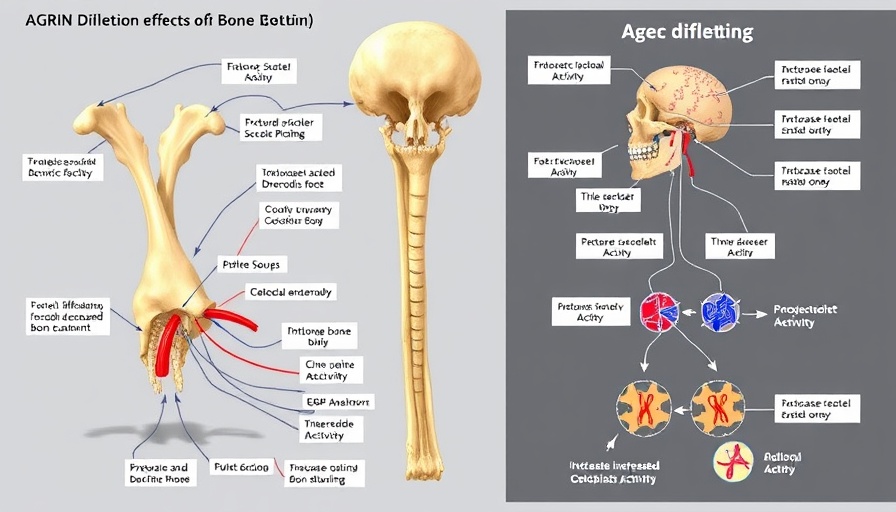
New Insights into Bone Health: The Role of Agrin
In a groundbreaking discovery that could reshape our understanding of bone health, a research team from the University of São Paulo’s Ribeirão Preto School of Dentistry (FORP-USP) has identified a protein known as agrin as being essential for maintaining bone tissue integrity. This finding could potentially lead to new therapies for conditions such as osteoporosis, a disease that weakens bones and increases the risk of fractures.
The Science Behind Bone Formation
Bone tissue maintenance is a complex process primarily governed by specialized cells called osteoblasts and osteocytes. Osteoblasts generate new bone tissue through the production of a mineralized matrix, while osteocytes are mature osteoblasts that regulate bone homeostasis—keeping bone mass balanced. The recent research published in the International Journal of Biological Macromolecules highlights how agrin, previously known for its role in cardiac and cartilage regeneration, is crucial for these bone-forming cells.
A Unique Discovery: Agrin's Dual Role
Professor Márcio Mateus Beloti, leading the research, noted the shared cellular origins of bone and heart tissues, leading to the hypothesis that agrin could be vital for both. In a series of experiments, the team eliminated agrin production in osteoblasts, which resulted in less differentiation and a corresponding decrease in mineralized matrix formation. This correlation indicates that the agrin protein stimulates osteoblasts essential for robust bone tissue formation.
Investigating Osteocytes: A Key to Homeostasis
The research didn’t stop with osteoblasts. Beloti and his team examined the role of osteocytes, hypothesizing that agrin might also be pivotal for their function. To focus their study, researchers created genetically modified “knockout” mice that selectively lacked agrin production in osteocytes. This was particularly important because total agrin deficiency is fatal; thus, the targeted approach allowed for a clearer analysis of agrin’s role within bone tissue.
The Implications for Osteoporosis Treatment
As the understanding of agrin's role deepens, its potential implications for osteoporosis treatment grow clearer. Osteoporosis affects millions worldwide, leading to increased fracture risk and diminished quality of life especially among the elderly. Enhancing bone mass and improving the quality of bone tissue through targeted therapies involving agrin could mark a significant advancement in treatment options.
Future Directions for Agrin Research
With these promising findings, future research will likely focus on exploring how agrin can be manipulated in clinical settings to improve bone health. Targeting agrin could unlock pathways for regenerative therapies that prevent or even reverse the debilitating effects of osteoporosis. Moreover, combining this research with regenerative medicine technologies, such as stem cells or gene editing techniques like CRISPR, could yield novel treatment modalities.
Conclusion
As the journey of understanding agrin unfolds, it serves as a reminder of the intricate biology of bone health and the potential for scientific advancements to revolutionize treatment strategies for bone diseases. Continuing these studies is essential not only for improving our grasp of osteogenesis but also for creating effective medical interventions for conditions like osteoporosis that affect countless individuals. Keeping abreast of these developments is vital for healthcare professionals and patients alike.
 Add Row
Add Row  Add
Add 




Write A Comment